Technological Innovations
Technological advancements are a driving force in the High Intensity Discharge Lamps Market. Innovations in lamp design and materials have led to improved performance and longevity of HID lamps. For instance, the introduction of ceramic metal halide lamps has enhanced color rendering and efficiency, making them suitable for a wider range of applications. Additionally, advancements in ballast technology have contributed to better energy management and reduced operational costs. The integration of smart lighting systems, which allow for remote control and monitoring, is also gaining traction. These innovations not only improve the functionality of HID lamps but also cater to the evolving needs of consumers and businesses. As technology continues to evolve, the High Intensity Discharge Lamps Market is likely to witness further enhancements that could redefine lighting standards.
Energy Efficiency and Sustainability
The High Intensity Discharge Lamps Market is experiencing a notable shift towards energy-efficient lighting solutions. As energy consumption regulations become more stringent, there is a growing demand for HID lamps that offer superior energy efficiency compared to traditional lighting options. These lamps are known for their high lumen output per watt, making them an attractive choice for commercial and industrial applications. The increasing emphasis on sustainability and reducing carbon footprints further propels the adoption of HID lamps. In fact, the market for energy-efficient lighting is projected to grow significantly, with HID lamps playing a crucial role in this transition. This trend not only aligns with environmental goals but also offers cost savings for businesses, thereby enhancing the overall appeal of the High Intensity Discharge Lamps Market.
Growing Demand in Commercial Applications
The High Intensity Discharge Lamps Market is witnessing a surge in demand from commercial sectors, particularly in retail, sports, and outdoor lighting applications. HID lamps are favored for their ability to provide bright, high-quality illumination, which is essential for enhancing visibility and aesthetics in commercial spaces. The retail sector, for instance, relies on effective lighting to attract customers and showcase products. Moreover, the sports industry utilizes HID lamps for stadium lighting, where high lumen output is critical for visibility during events. According to recent estimates, the commercial lighting segment is expected to account for a substantial share of the overall HID lamp market. This growing demand underscores the importance of HID lamps in creating functional and appealing environments, thereby driving the High Intensity Discharge Lamps Market forward.
Urbanization and Infrastructure Development
Urbanization is a key driver of the High Intensity Discharge Lamps Market, as cities expand and infrastructure projects proliferate. The need for effective street lighting, public spaces, and commercial facilities necessitates the use of high-quality lighting solutions, where HID lamps are often preferred due to their efficiency and brightness. As urban areas grow, the demand for reliable and durable lighting solutions increases, leading to a rise in HID lamp installations. Infrastructure development projects, including highways, bridges, and public transport systems, also require effective lighting to ensure safety and visibility. This trend is expected to continue, with urbanization driving the need for advanced lighting solutions, thereby propelling the High Intensity Discharge Lamps Market into a new phase of growth.
Regulatory Support for Energy-Efficient Solutions
Regulatory frameworks are increasingly favoring energy-efficient lighting solutions, which significantly impacts the High Intensity Discharge Lamps Market. Governments and regulatory bodies are implementing policies that promote the use of energy-efficient technologies, including HID lamps. Incentives such as tax rebates and subsidies for energy-efficient lighting installations are becoming more common, encouraging businesses to transition from traditional lighting to HID solutions. Furthermore, regulations aimed at reducing greenhouse gas emissions are pushing industries to adopt more sustainable practices. As a result, the HID lamp market is likely to benefit from these supportive regulatory measures, which not only facilitate market growth but also align with broader environmental objectives. This regulatory landscape is expected to continue evolving, further bolstering the High Intensity Discharge Lamps Market.

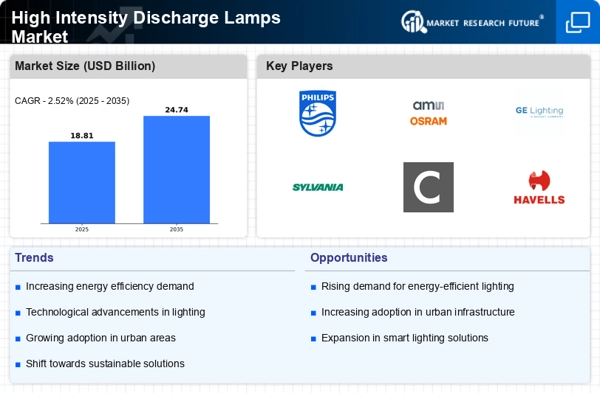
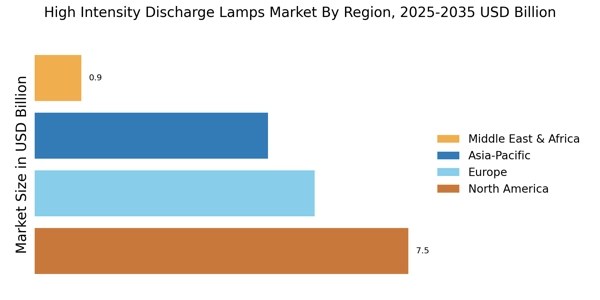

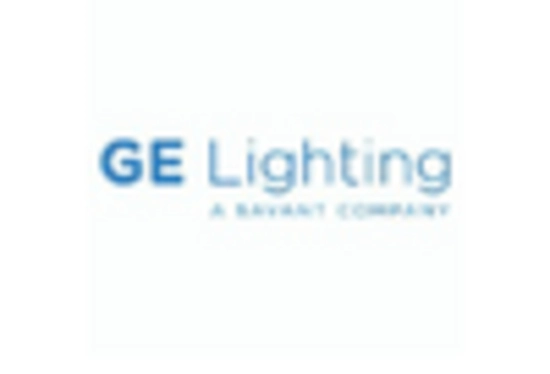
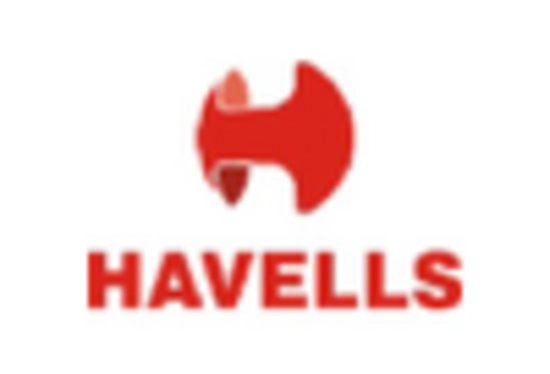
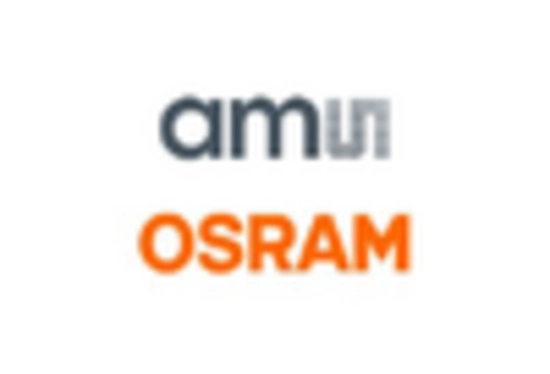










Leave a Comment